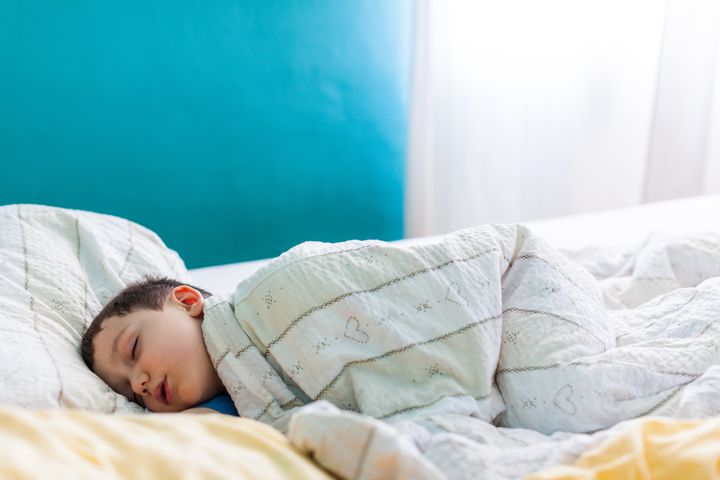
What a world it would be if our children fell asleep as soon as their heads hit the pillow. Alas, that’s often a far off dreamy – but there are things we can do to make bedtime a little easier.
Janine Reynolds is a lead nurse at the Sheffield Sleep Clinic, where a pilot scheme – involving a deep dive into kids’ sleeping environments – boosted kids’ kip by 2.4 hours a night, NHS England says.
Reynolds runs paediatric workshops offering advice to parents and carers, so we chatted to her to get her key tips she passes on about getting kids to sleep.
1. Use this detailed, one-hour bedtime routine.
A consistent routine is key, says Reynolds. Start with a hand-eye coordination activity for half an hour – such as shape sorters or jigsaws, she advises – to spend quality time with your child.
This should be followed by supper time away from the bedroom. “You want to make sure they’re not hungry,” she advises. “Try finishing off with sleepy foods such as cherries, berries or bananas to promote the melatonin hormone.”
If your child has milk, it should be after they’ve eaten – and not near their bed.
Next comes a relaxing bath or shower – “to achieve that temperature change” – and then straight to the bedroom.
Have a set phrase you say as you leave them, such as “Good night, sleep tight, love you.” And leave them to self-settle (more on that below).
Getting them ready in the same order every night is important. And waking up at the same time the next morning will help this routine stay consistent.
2. Try to get them to self-settle.
Because of sleep cycles, children are likely to wake six to eight times a night, says Reynolds. So if they can’t settle on their own at the beginning of the night, each time they wake, they will hanker after what they had when they fell asleep – a bottle, or a story, or their parents there.
Stand with your hand on them for comfort, rather than lying in the bed with them, and move away from them gradually.
More often than not, they’ll want you to come back. “Don’t give eye contact, and try to give no verbal contact,” she adds. “Screaming at them will be like adding fuel to fire. Just be boring.”
3. Make sure their bedroom is a tranquil place.
That means no angst, no raised voices – just a calm, and consistent routine, says Reynolds. For sleep to occur, she says, you need a tranquil brain and the ability to “just be”.
4. Keep hugs and kisses to a minimum at bedtime.
This might surprise you, but Reynolds describes children as being “like slot machines”, where they’ll keep asking for one extra hug – or one extra book.
“Be clear,” she says. “You set the scene for bedtime and tell them: ‘One book, one kiss, one hug’. Then say it’s time to sleep, love you.”
5. Keep the lighting right.
Some parent use their iPhone and lullabies on projectors to help their kids sleep – but Reynolds advises against tech. The room should be dark, with a dimmed light for story time.
If they do need a night light, it should be in red/orange tones, which are more are conducive to sleep.
6. Reduce exercise and sugar before bed.
You might assume exercise before bedtime – whether they’re just running around the house – will help tire children out. But too much activity close to bedtime is “not ideal”, says Reynolds. So it’s better if your toddlers aren’t bouncing around towards the end of the day.
“Exercise wakes you up,” she says. Similarly, sugary drinks before bedtime aren’t great for sleep.
What if none of this works?
If your child is waking up multiple times throughout the night, and it’s affecting their mental wellbeing – or yours – look into seeking help, she advises. Children can be iron deficient, have restless legs, suffer from undiagnosed sleep disorders – there are many reasons why your child might be unable to sleep.
“For any parent struggling, there is help out there,” she says. “If you’re in crisis, there is help. We can pass a referral on, or signpost you to the right people.”
For more support, try the Children’s Sleep Charity, which has information and resources online.